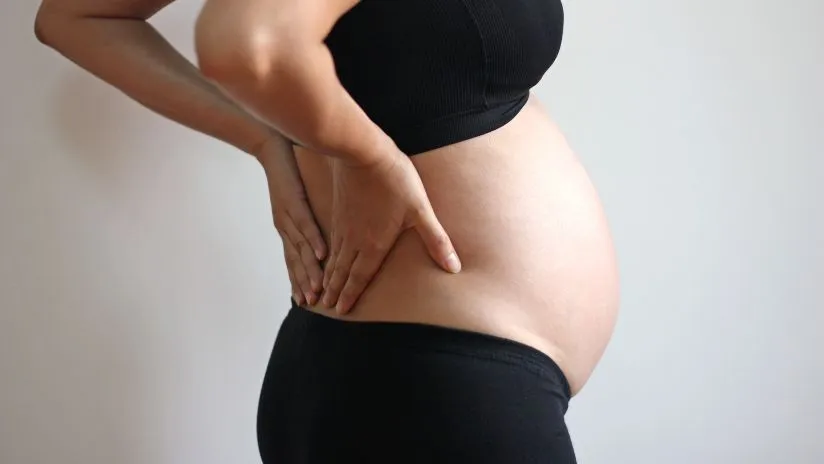Pregnancy-related pelvic pain - Painful challenge during pregnancy
Up to 70% of pregnant women experience pelvic and lower back pain. Many of them suffer from pregnancy-related pelvic pain, also known as symphysis pubis dysfunction (SPD). It can be hard to tell the difference between this condition and general pregnancy-related lower back pain, but it's important to seek support from a healthcare provider or physical therapist with expertise in prenatal care.
Read time: 3 m
Verified by Anna Reinhold Landaeus
Licensed Personal Trainer - expertise in training during and after pregnancy.
What Is Pregnancy-Related Pelvic Pain?
Pregnancy-related pelvic pain refers to discomfort in the pelvic area caused by physical and hormonal changes during pregnancy. While the causes can vary, it's often linked to hormonal shifts that loosen ligaments in preparation for childbirth.
Common Symptoms of Pelvic Pain During Pregnancy
Symptoms of pelvic pain during pregnancy can range from mild to severe and often include:
- Pain in the pubic bone area
- Discomfort around the sacroiliac joints
- Pain between the buttocks and lower back
- Pain radiating to the inner thighs or groin
Pelvic girdle pain may feel like a dull ache or a sharp, stabbing pain. It can occur in the front (pubic symphysis), the back (posterior pelvic pain), or both.
Why Does Pelvic Pain Occur During Pregnancy?
The exact cause is unclear, but pregnancy-related pelvic pain is strongly associated with hormonal changes that impact joint flexibility and muscle stability. Some women never experience it, while others find it affects their daily life.
Treatment and Relief for Pelvic Girdle Pain
There are effective ways to manage pelvic pain during pregnancy, including:
- Acupuncture
- Wearing a pelvic support belt
- Strengthening exercises
A physical therapist who specializes in pregnancy can help design a safe and effective exercise routine suited to your needs.
Everyday Tips to Manage Pelvic Pain
Simple adjustments can ease the discomfort:
- Use a lumbar support pillow while driving
- Sit on a plastic bag to slide out of the car more easily
- Choose chairs where your hips are higher than your knees
- Keep your legs hip-width apart and avoid crossing them
Safe Exercise Tips for Pelvic Pain During Pregnancy
Avoid exercises that may strain the pelvis:
Avoid:
- Crossing your legs
- Taking long steps or lunges
- One-sided weight-bearing exercises
Do:
- Strengthening your core, legs, glutes, and back
- Gentle circulation-boosting activities
- Pay attention to your body and stop if you feel pain
Living With Symphysis Pubis Dysfunction
Pelvic pain during pregnancy can be difficult—but with the right treatment and support, symphysis pubis dysfunction can be managed. Don’t hesitate to get professional help to stay as comfortable and active as possible throughout your pregnancy.
Verified by Anna Reinhold Landaeus
Licensed Personal Trainer - expertise in training during and after pregnancy.
More from Preggers
Hundreds of related articles, podcasts & more waiting for you in the Preggers app.
Download Preggers today.

